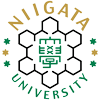| The 1964 Niigata earthquake | The Niigata earthquake caused various kinds of damage, such as the collapse of buildings due to ground liquefaction, fires at refineries, and tsunamis run-up into rivers. |
|---|---|
| The 1981 heavy snowfall | Heavy snowfall covered a wide range of northern Japan and caused more than 100 casualties. |
| The 2004 Niigata-Fukushima heavy rainfall | Heavy rainfall occurred in Niigata and Fukushima Prefectures. A levee breach caused disastrous flooding in urban areas. A large number of landslides also occurred in mountainous areas. |
| The 2004 Mid-Niigata Prefecture earthquake | The earthquake in the Mid-Niigata Prefecture had a maximum seismic intensity of 7 causing approximately 70 fatalities. The vulnerability of mountainous areas to earthquake damage was clearly revealed. |
| 2006 | Research Center for Natural Hazards and Disaster Recovery was established. |
| The 2007 Niigataken Chuetsu-oki Earthquake |
The Niigataken Chuetsu-oki Earthquake was triggered by an offshore fault causing severe damages in Niigata Prefecture. In Kashiwazaki City and surrounding areas, the maximum seismic intensity of 6 was recorded. |
| 2011 | Research Institute for Natural Hazards and Disaster Recovery was established. |
| The 2011 Niigata-Fukushima heavy rainfall | In Niigata-Fukushima, the lower catchment of the Shinano River was largely flood after a torrential rainfall (>100mm/h). The vulnerability to lowland areas was clearly recognized. |
| 2015 | The research institute was reorganized to include four research divisions: “Cascading and Linked Multi-Hazards”, “Hazard Mitigation”, “Societal Safety Systems”, and “Environmental Dynamics”. |
Research Institute for Natural Hazards and Disaster Recovery Niigata University


HomeMain History of the institute and Natural Hazards in Niigata Prefecture